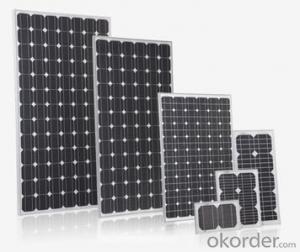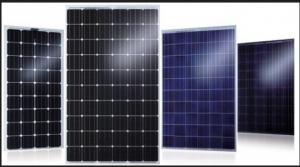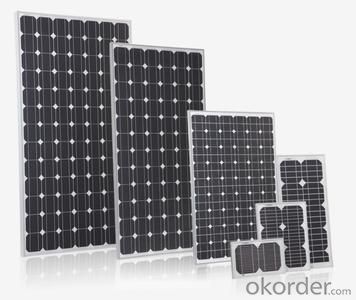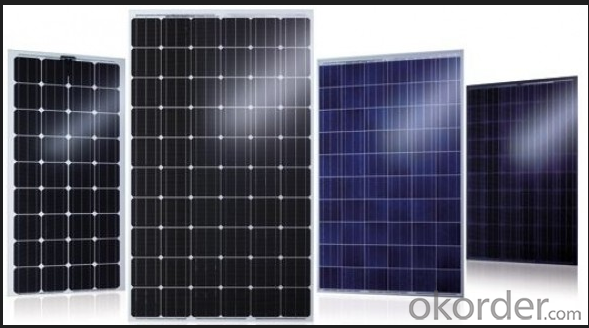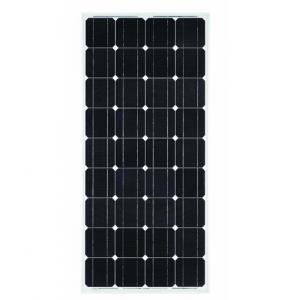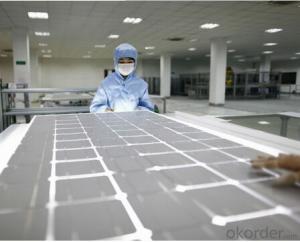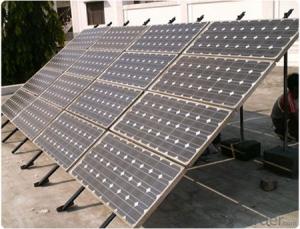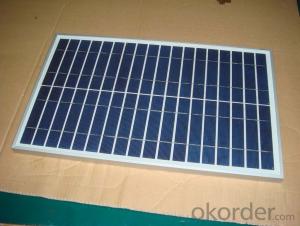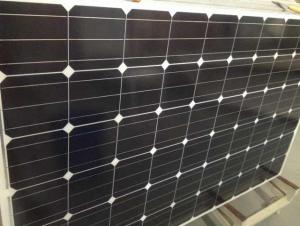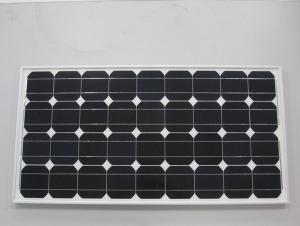Large Solar Panels - Powerwell Solar Panel with TUV, CE, SGS, CEC, IEC, ISO, OHSAS, CHUBB, INMETRO Approval
- Loading Port:
- China main port
- Payment Terms:
- TT or LC
- Min Order Qty:
- 1 m.t.
- Supply Capability:
- 9999999999 m.t./month
OKorder Service Pledge
OKorder Financial Service
You Might Also Like
Quick Details
CNBM Solar is a world-leading and Vertical integrated manufacturer of high-performance with Silicon,
Wafer, Cells, Modules, which convert sunlight into electricity for residential, commercial, and utility-scale
power generation.
The capacity of CNBMSolar is reach to 1GW, and make sure each year our shipment capacity is more
Than 700-800MWs, at the same time, we have set up the largest solar power station with our partner
in Ukraine.
CNBM is a Quality + Service oriented company with“Excellence at Each Step” approach, composed of
the finest components from TUV and IEC-certified partners around the world, CNBM modules consistently
undergo a variety of trials at the company’s Test & Development Centre, ensuring peak performance
capabilities. The company is committed to develop and provide the world with clean and renewable energy
to ease the energy shortages as well as human kind’s impact on the environment.
Specifications
1.100% A grade cell
2. Positive Tolerance
3. Super quality competitve price
4. International Standard
5. 25Years Warranty
Good Quality 185W Solar Panel | |
Peak Power-Pmax(W) | 185W |
Open Circuit Voltage-Voc(V) | 44.2 |
Maximum Power Voltage-Vmp(V) | 36 |
Short Circuit Current-Isc(A) | 5.4 |
Maximum Power Current-Imp(A) | 5 |
Maximum System Voltage | 1000V DC |
Maximum Series Fuse Rating | 10A |
Power Tolerance | -1~+3% |
Temperature Coefficients of Pmax | -0.45%/℃ |
Temperature Coefficients of Voc | -0.348%/℃ |
Temperature Coefficients of Isc | 0.031%/℃ |
Nominal Operating Cell Temperature | 44.5±2℃ |
Standard Testing Condition(STC) | Irradiance:1000W/m²;Temperature:25℃;AM=1.5 |
Qualification Test Parameters | |
Operating Temperature | -40℃~+85℃ |
Storage Temperature | -40℃~+85℃ |
Pressure Bearing | ≥5400Pascal/m² |
Wind Bearing | ≥5400Pascal/m² |
Mechanical Characteristics | |
Cell Size | Mono 125*125mm±0.5 |
No.of Cells | 72pcs(6*12) |
Dimension | 1580*808*40mm |
Weight | 15.5Kg |
Glass | 3.2mm High Transmission,Low Iron |
Frame | Anodized Aluminum Alloy |
Junction Box | IP65Rated |
Internal Diodes | 3 Bypass Diodes |
Cable | 1*4.0mm² Length 900mm |
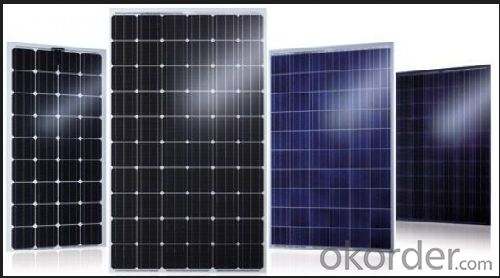
FAQ:What's your products warranty ?
12 yrs free from defects in materials and workmanship;No less than 90% within 10yrs and no less than 80% within 25yrs
- Q: How do solar panels affect the property's green certification?
- Solar panels can positively impact a property's green certification by enhancing its sustainability and energy efficiency. The installation of solar panels reduces reliance on non-renewable energy sources, decreases carbon emissions, and promotes the use of clean energy. This aligns with the requirements of most green certification programs, which prioritize environmental responsibility and conservation. Therefore, incorporating solar panels can contribute significantly to a property's green certification and help demonstrate its commitment to sustainable practices.
- Q: Can solar panels be integrated into building materials?
- Yes, solar panels can be integrated into building materials. This integration is commonly known as building-integrated photovoltaics (BIPV), where solar panels are designed to function as part of the building's structure. This allows for seamless incorporation of solar energy generation into the building's overall design, enhancing energy efficiency and aesthetics.
- Q: Does anyone know how I would go about hooking up the air conditioners in my house to solar panels? I would want just the air conditioners to be powered by solar energy. How could I hook it up where the panels can absorb energy from the sun during the day, and save and store the energy so I can run the air conditioners at night? I really feel that in the long run, this would save a lot of money with the energy bill. It's the use of the air conditioners that drive up the bill. Is this idea feasible? Is it also possible to have some sort of hybrid system where I can switch from solar to my regular local energy source when I want to?
- There are solar air conditioners. They don't use electricity. Most anyway. The number of photovoltaic panels you would need to run a standard electric air conditioner would cover most of the homes on the block. Read about heat pumps, Thermal storage, swamp coolers, solar heating to get an idea of what is practical. Most solar systems are hybrid because of clouds and nightfall. The best solar homes are designed from the ground up. With plenty of insulation, the right size and orientation of windows and collectors. Putting solar on an existing structure is going to be a misfit half donkey job unless you are very lucky.
- Q: Can solar panels be used in areas prone to hurricanes or earthquakes?
- Yes, solar panels can be used in areas prone to hurricanes or earthquakes. While these natural disasters can pose challenges, solar panels are designed to withstand extreme weather conditions. They are built with durable materials and undergo rigorous testing to ensure their ability to withstand high winds, heavy rain, and even minor earthquakes. Additionally, proper installation techniques and maintenance practices can enhance their resilience in these areas.
- Q: Can solar panels be installed on historic buildings?
- Yes, solar panels can be installed on historic buildings. However, the installation process needs to be carefully planned and executed to ensure that it does not damage the historic fabric or compromise the architectural integrity of the building.
- Q: Can solar panels be used for charging electric scooters?
- Yes, solar panels can be used for charging electric scooters. By connecting the electric scooter to a solar panel system, the sunlight energy is converted into electricity, which charges the scooter's battery. This eco-friendly and sustainable method of charging can reduce reliance on grid electricity and promote renewable energy usage.
- Q: Can solar panels be used to power a skyscraper?
- Yes, solar panels can be used to power a skyscraper. With advancements in technology, large-scale solar panel installations can generate enough electricity to meet the energy demands of a skyscraper. However, it may require a significant number of panels and efficient utilization of available space to maximize solar energy production. Additionally, energy storage systems can be employed to ensure continuous power supply, especially during periods of low sunlight or at night.
- Q: Can solar panels be installed on historical landmarks or monuments?
- Yes, solar panels can be installed on historical landmarks or monuments. However, it requires careful planning and consideration to ensure that the installation does not compromise the integrity or aesthetics of the site.
- Q: Do I need some type of regulator when the batteries are fully charged.?? The Arco Panels voltage is approx 7VDC at 2.5 amps, Should I limited the voltage to 4VDC???. I would like to connect both panels to up to five batteries at one time...???
- You can buy Solar Charger Regulators. I don't. These chargers limit the charging current to the batteries, so you do not get a full efficiency of the solar panel. They disconnect the batteries from the user side (the bulbs you use) if the battery voltage goes below a certain level (i.e. below 8V for a 2V battery), so you cannot use all the power available in the batteries, even in emergency. They introduce, at least, a 0.7V loss (diode forward voltage) between the panel and the battery. If you have SEVERAL panels and a lot of batteries, use a controller as above. If you only have one panel, insert a 5A trip fuse in line (in your case: twice the current of the panel), and a 0-20A diode in series between the panel and the batteries (Kathode side of the + of the battery, Anode side of the + of the panel). Install a voltmeter across the battery. The fuse will prevent any short or over-charge current. The diode will prevent the battery to discharge into the panel at night if it is not already protected. The voltmeter will allow you to watch the status. Your thought of limiting the voltage is useless: should the battery be low, the panel will drop its voltage, limited by the max current. Should the battery be fully charged and the solar panel at full efficiency, it will just try to charge the battery more. A bit of bubbles may result, hence the voltmeter to watch over it. If you want to limit the voltage to 4V, put a 4V Zener (4Vx2.5W!) in series with a resistor of, say, 7V-4V/2.5A or ~ Ohm, 5W, in parallel with the panel.
- Q: Do solar panels require a backup battery system?
- No, solar panels do not necessarily require a backup battery system. However, having a battery system can be beneficial as it allows for the storage of excess energy produced by the solar panels, which can be used during times when there is no sunlight or during power outages.
Send your message to us
Large Solar Panels - Powerwell Solar Panel with TUV, CE, SGS, CEC, IEC, ISO, OHSAS, CHUBB, INMETRO Approval
- Loading Port:
- China main port
- Payment Terms:
- TT or LC
- Min Order Qty:
- 1 m.t.
- Supply Capability:
- 9999999999 m.t./month
OKorder Service Pledge
OKorder Financial Service
Similar products
Hot products
Hot Searches
Related keywords
